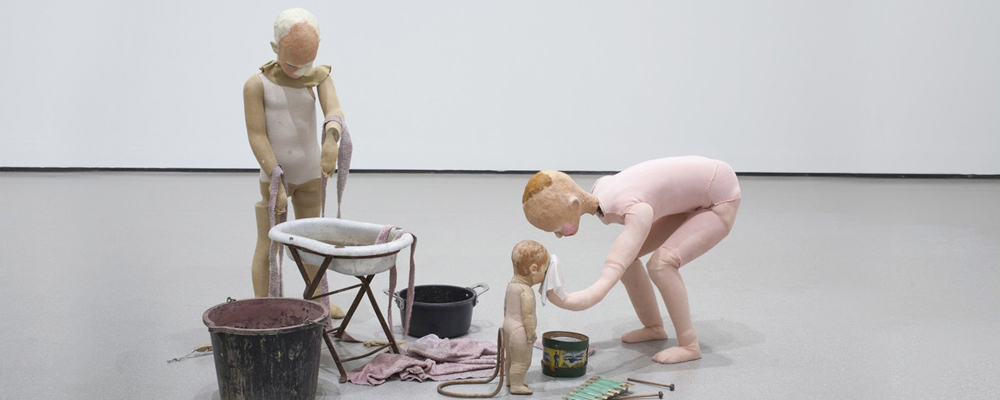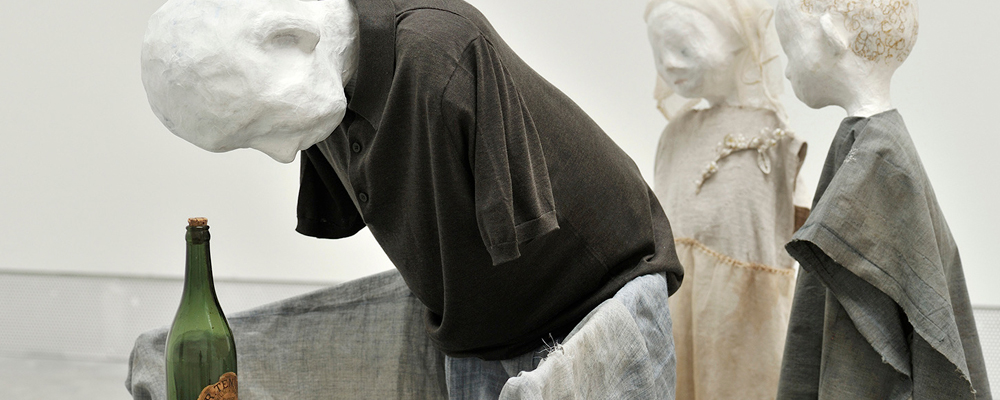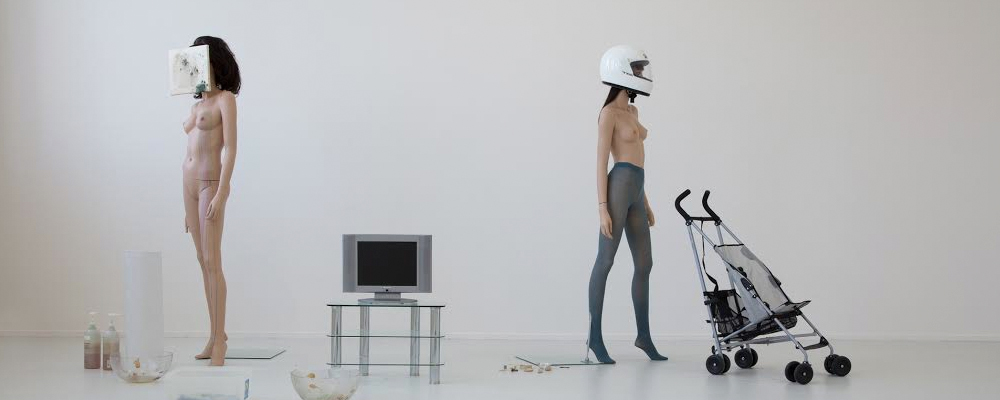Cathy Wilkes’ Dark Wonderland at MoMA PS1
John Martin Tilley
The concept of the readymade, an object that is plucked from regular life and, unchanged, made into art simply by saying so. A revolutionary concept initiated into the art world by that rascal Marcel Duchamp in the early 21st century is taken to a whole new level by the sly artistic hand of Cathy Wilkes at MoMA PS1.
As homage to Duchamp, whose first readymade of legend was a urinal turned on its side, the initial room of Wilkes’ resembles a kind of bleak bathroom, complete with a uniform display of razors before a porcelain sink and yes, a toilet, here sprinkled with sprigs of lavender. An outdated Television looms, the screen decidedly off, on an outdated glass stand. Everything seems to be from an era about ten or fifteen years ago. A Nokia phone lingering in a dirty tray on the floor, pieces of ephemera beneath a glass case, DVDs, recall a time before the digitization of everything made it all oh-so obsolete.
Continue further in and the glass case itself has been made obsolete. The nostalgic, filthy ephemera has broken free, littering the floor carelessly, the museum guards sweating bullets as they watch the viewers more carefully than they normally would. Dried brown plants lay innocently by, leaves like those of bug wings are sprinkled in rows of glassware beside an enormous aquarium, empty and smudged with a mysterious sludgy substance — have the ephemera grown legs, evolved into beings, wriggled out of their casings? If they have, they’ve taken on curious plastic human form. Two female mannequins stand proudly around another defunct television, their bared breasts on their thin bodies a reflection of the overall rawness here, they’ve emerged, only to be appropriated into art. One wears a canvas that seems to have dripped onto her body and down her thigh, the poor thing. An empty stroller lingers — where has the baby wandered off to?
Wandering is part and parcel of this exhibition. The next space is much larger, the mannequins have morphed from their initial enticing anatomical forms to totemic ethereal creatures — what has changed? They’ve passed through a kind of vortex, their features warped and their skin blanched. The ephemera continues, most of it on the floor. One realizes that the entire exhibit seems to be on the viewing-level of a child, and indeed the experience is something like a toys-come-alive dream that is always teetering towards becoming a full-fledged nightmare.
The final room introduces the first discernibly male figure, who squats before a green bottle of alcohol upon a stool, two children, a boy and girl, mournfully standing by, their heads bowed. His body position implies that he’s about to vomit or defecate, and yet it is a kind of miraculous balancing act, since he is without arms. The room is framed with dangling linens with antique patterns like laundry hung out to dry, the floor littered with rocks and broken glass. There is something Freudian about this room, and yet this father seems in his posture also to be holding an impossible weight and breaking beneath it — feminist accusations hurled at him? Our assumptions based on his surroundings? Our expectations and comparisons based on his one defining characteristic: that he is a man?
Throughout the exhibition are the linen paintings, hallow color fields reflecting the dry, washed-out palette of the entire experience. Looking at them, they seem like the portals that these strange anthropomorphic creatures have passed through, entering our realm to occupy their strange poses, waiting to return to the ur-dimension from which they came. One wonders if they live in the fine line between waking and dreaming, and if we will encounter them again when we fall asleep.
Cathy Wilkes is on view at MoMA PS1 Oct. 22, 2017 until March 11, 2018.



